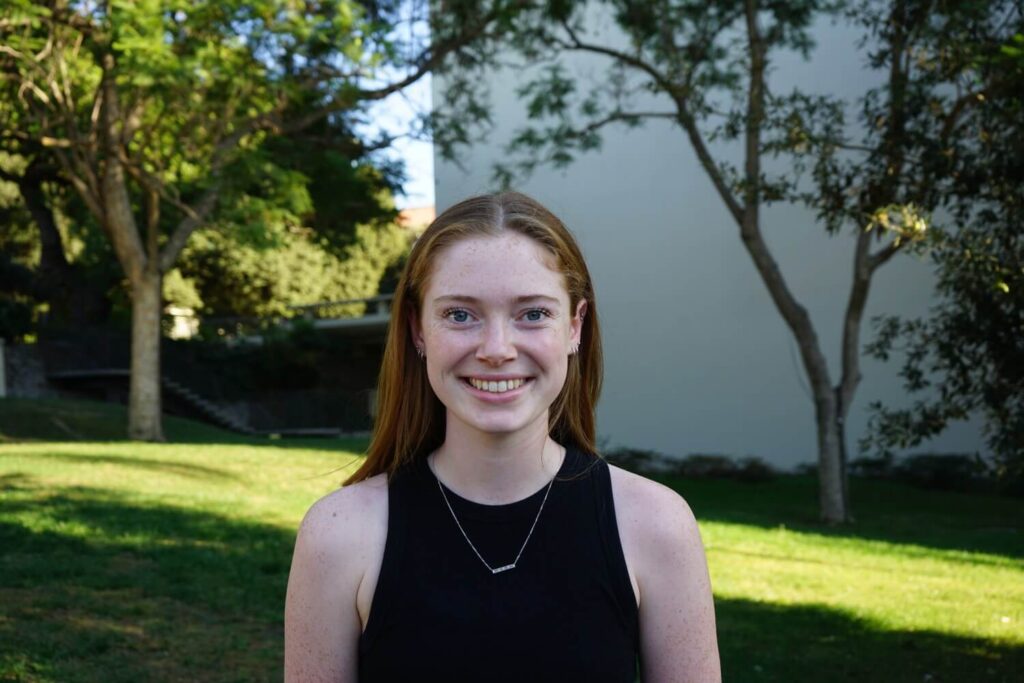
Oct. 11, Director of Financial Aid Sheryl Reinschmidt sent an email to Occidental students informing them that the launch of the 2024–2025 Free Application for Federal Student Aid (FAFSA) Form will be delayed until Dec. 2023. The deadline to reapply for financial aid at Occidental for 2024–2025 will remain Mar. 2, 2024, according to the email.
Reinschmidt said in the email that the FAFSA Simplification Act “represents the biggest change to the FAFSA and its resulting calculations in decades.” According to Reinschmidt, Occidental College will support students through these changes. Reinschmidt told The Occidental that the changes being made to the FAFSA directly resulted in the delay.
“[The FAFSA form] has been coming out on Oct. 1 since 2017,” Reinschmidt said. “This year, they said, ‘well, the law technically says we have to release it by Jan.1.’ I fully anticipate that next year, it should be back to Oct. 1.”
Vice President of Enrollment Maricela Martinez said via email that approximately two thirds of applicants apply for financial aid each year. According to Reinschmidt, 78.6 percent of Occidental students receive some sort of financial aid.
Martinez said that Occidental does not anticipate any major changes for applicants this year.
“Normally, Early Decision I applicants would submit the FAFSA and CSS Profile when they apply on Nov. 15,” Martinez said. “This year, ED I applicants will only be able to submit the CSS Profile. If admitted, a student will be instructed to submit their FAFSA application in mid-January.”
Reinschmidt said that the Financial Aid Office is preparing for the FAFSA to be released on the last day of December. The Financial Aid team will hold workshops to assist any students that have questions as they fill out the form, according to Reinschmidt.
“I hope that current students will be able to complete it and get any questions answered in the two months [before the deadline],” Reinschmidt said. “We don’t know exactly what day in December the FAFSA will be released yet.”

Calculation Changes
According to Reinschmidt, currently, the FAFSA data produces an Expected Family Contribution (EFC). The EFC is going to be replaced by the Student Aid Index (SAI), Reinschmidt said.
“The calculation of the SAI is completely different,” Reinschmidt said.
According to Reinschmidt, the FAFSA will still ask about income and assets for both the parent and the student (for dependent students), but the SAI will consider other factors in its calculation at a different proportion than the EFC did.
“[The SAI] has a larger focus on parents’ income compared to the poverty guidelines of the state they live in,” Reinschmidt said. “Parents’ marital status also impacts the SAI, and it did not impact the EFC much.”
Reinschmidt said the main change is that the FAFSA no longer includes the number of students that a family has in college in its aid calculation.
“The one thing that I think is getting a lot of attention in the media is that having two children in college no longer counts,” Reinschmidt said. “The reason that they changed that aspect is because the way the SAI is calculated they project will make more students eligible for Federal Pell Grants and make those students eligible for more dollars.”
Reinschmidt said that the number of students in college was not needed to improve Federal Pell Grant eligibility.
Occidental’s Response
According to Reinschmidt, Occidental College looks at the FAFSA, which determines a student’s federal and state financial aid eligibility, as well as the CSS Profile and family tax returns to create what Occidental determines to be a family contribution.
“Sometimes it’s the same and sometimes it’s different from what the federal government says,” Reinschmidt said.
Reinschmidt said that Occidental has always included having two or more people in college as a large part of their family contribution calculation, and Occidental will continue to do so.
“If any family loses Federal Pell Grant eligibility only because of that number-in-college change, and everything else stays the same, we will make up for it in Oxy funds,” Reinschmidt said.
According to Reinschmidt, the number of students whose families have two students in college is not the majority when considering the population of Occidental students who submit a FAFSA form.
“The Department of Education believes that it’s going to balance out,” Reinschmidt said. “We might be helping Student A who has a sibling in college with a little bit more Oxy funds, but we’re probably going to get a little bit more in Federal Pell Grant dollars from Student B that will offset that cost.”
Martinez said in an email that fewer than 100 colleges and universities in the country meet 100 percent of domestic students’ demonstrated need, and Occidental is part of this group.
“Every decision that we make is focused on what’s equitable,” Reinschmidt said. “It would be unfair for students to lose money. We’re still meeting 100 percent of their need, so if their need is met by less in federal funds, then we will meet that need with increased Oxy funds.”
Caroline Vanderloo (sophomore) said she always knew one of her deciding factors when applying to college would be financial aid.
“One of the biggest reasons I picked Oxy was because I got really nice financial aid here,” Vanderloo said.

According to Vanderloo, she did not receive her offer package for her second year until about a month before classes started.
“So I was [on campus] doing research in the summer, got my financial aid offer back, and my Expected Family Contribution more than doubled,” Vanderloo said.
Vanderloo said she and her family filed a petition with the school and received more financial aid, but they were still responsible for more than before.
“The situation was that both of my parents made more money, not a significant amount of more money, but a little bit more,” Vanderloo said. “The difference is that my parents weren’t contributing any more money. They were making more money, but the set amount they were willing to contribute didn’t change, and the rest fell on me.”
Vanderloo said it is difficult to prove how much her parents are contributing to her college education, especially when they provide for other aspects of her life which makes her ineligible to claim that she’s independent.
“Many schools say they cover 100 percent of demonstrated financial need, but I got vastly different amounts of financial aid from schools that made the same promise,” Vanderloo said.
Vanderloo said she hopes the updated FAFSA form will provide a better way to demonstrate how much a student’s family is contributing versus how much the student is contributing to the cost of education. She said she knows parents could lie and say their student is paying for everything in order to receive a lower cost of attendance.
“I understand why the system is in place, but it is frustrating when the student is the one paying for it, yet it’s charged as if the parents are,” Vanderloo said.
FAFSA Form Updates
Reinschmidt said that the redesign of the FAFSA form is completely different from the current method. The student will start the FAFSA and input their student information, and then the parent will receive an emailed invitation in order to fill out the parent information separately. Once the parent finishes, the FAFSA form will be processed and officially completed.
“Another big difference is there’s a new concept called FAFSA contributors,” Reinschmidt said. “A FAFSA contributor is anybody whose information is required to be on the FAFSA. So, the student is always going to be a contributor. Depending on the parent situation, a parent for a dependent student will always be a contributor.”
According to Reinschmidt, in the past, there was a voluntary transfer of income data from the IRS (the IRS Data Retrieval Tool) that could be opted into, which simplified the process of submitting the FAFSA and allowed students to submit less documentation to financial aid offices.
“That’s going to be replaced with what’s called a Direct Data Exchange with the IRS,” Reinschmidt said. “This is going to be mandatory instead of voluntary as it has been in the past.”
Every contributor to the FAFSA, student and parent, has to give their approval for the IRS information to get transferred to the FAFSA, according to Reinschmidt. This could turn into a problem for students with parents who do not want to provide approval.
“It could be an issue if your parent, who is supposed to complete their portion of the FAFSA, simply refuses, then the student cannot get federal student aid,” Reinschmidt said.
Reinschmidt said a student can submit a FAFSA on their own for a federal unsubsidized loan, but that would be the only fund they would be able to receive.
“Communication with your parents is going to be key this year, and I think it is every year, but it’s going to be more important to understand that it’s a mandatory process,” Reinschmidt said.
According to Reinschmidt, the definition of a custodial parent is changing for the FAFSA.
“Previously, your custodial parent was the one that you lived with more in the last 12 months, and that’s the parent that had to be putting their information on the FAFSA,” Reinschmidt said. “The Department of Education is changing that definition. It is no longer tied to where the student lives. It is which parent provides the most financial support to the student in the last 12 months.”
According to Reinschmidt, the FAFSA had about 108 questions, but that number has been reduced to a maximum of 36. Some of the questions that have been removed involve if students have registered for military selective service and if they have been convicted for the possession or sale of illegal drugs, Reinschmidt said.
“There were some questions related to what we call untaxed income, so income that a family might receive that is not on their tax return,” Reinschmidt said. “What is brought in from the IRS will be sufficient for most families.”
Reinschmidt said that until the FAFSA is released anything could change, and if students have any questions they can reach out to the Financial Aid Office either by appointment, sending an email or walking in from 8 a.m. to 5 p.m. Monday through Friday.
“Because of these changes, if there’s an increase in student questions, that’s what we’re here for,” Reinschmidt said.
Contact Ava LaLonde at lalonde@oxy.edu
![]()


































